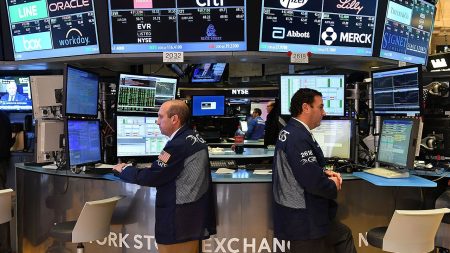The Federal Reserve recently released its annual bank Stress Test results, revealing that 31 major U.S. banks with at least $100 billion in assets all passed, with each bank exceeding its minimum capital requirements during a hypothetical recession.
The major banks saw higher hypothetical losses in the latest Test, in which this year’s “severely adverse” scenario predicted a 10% increase in U.S. unemployment, a 55% loss in equity prices, and a 40% drop in commercial real estate prices. As with the previous year, a subset of banks with big trading businesses experienced an additional “global market shock” component that included equity price drops, a sharp rise in short-term U.S. Treasury yields, and a weaker dollar.
While no bank appeared to be significantly knocked off course this year which used approximately the same assumptions as the 2023 Test, the group’s aggregate capital levels decreased 2.8 percentage points, worsening the decline from last year. Still, the group’s common equity Tier 1 capital, the highest-quality regulatory capital, would bottom out at 9.9%, well above the 4.5% minimum requirement, regulators pointed out.
Michael Barr, Vice Chair for Supervision of the Board of Governors of the Federal Reserve System, ascribed the increased losses this year to higher credit card balances and delinquencies, riskier corporate credit portfolios, and a combination of higher expenditures and lower fee revenue in recent years, which resulted in less net income to offset losses. These three criteria “suggest required capital buffers should be larger.”
FAVORED BIG BANK STOCKS
Roughly half of the 31 banks that were stress-tested this year quickly released statements about their preliminary stress capital buffers. Nine of those companies said that their preliminary stress capital buffer is larger than last year’s, while the buffer was smaller at four banks, and it was unchanged at three more. The new stress capital buffers at all the affected banks will be effective from Oct. 1, 2024, through Sept. 30 of next year.
Many banks also announced dividend increases or additions to their share buyback programs, including two of my favorite companies. I like JPMorgan Chase (JPM), as its fortress balance sheet provides a stable keel to go along with an ability to generate profits in varied environments. A statistically deeper bargain, trading at a huge discount to tangible book value, I also am liking the turnaround efforts underway at globally diverse Citigroup (C) under CEO Jane Fraser.
Stay tuned as I’ll soon reveal another bank stock my team and I at The Prudent Speculator think is worth considering for value-oriented investors.
This is a condensed version of weekly commentaries available to subscribers of The Prudent Speculator. The Prudent Speculator’s content is curated each week as a valuable resource for recent stock market news, investing tips and economic trends. To receive regular reports like this one, sign up here: Free Stock Picks – The Prudent Speculator.
Read the full article here










